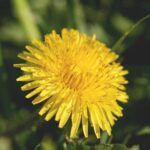Introduction
River sand is a granular material composed of finely divided rocks and minerals. It can be mined from riverbeds or harvested from coastal areas, making it a naturally-occurring source of sand. It can be used in many applications, including gardening. Using river sand for gardening has several benefits over the more traditionally used horticultural sands and topsoil mixes.
Benefits of River Sand:
River sand contains essential nutrition for plants that is not found in other types of soil, such as potassium and calcium. River sand helps provides soil structure, improving water drainage and aeration on a microscopic level which promotes strong root growth and greateroxygen levels for the plants. In addition to boosting its nutrient content, it also helps improve soil texture by acting as an aggregate which binds soil particles into large clumps, allowing better infiltration of water and air into the soil. This prevents erosion by keeping the moisture near the roots which increases the rate of growth in various trees and shrubs planted in sandy soils. River sand also holds together well when mixed with compost or manure while still providing enough aeration so roots can breathe properly enabling faster absorption of nutrients making it ideal for use in any kind of gardening or landscaping project.
Benefits and Uses of River Sand in Gardening
River sand can be used in different ways in the gardening environment. It can help regulate soil pH, as well as provide drainage and aeration for better root growth. River sand is also useful when mixed with compost or fertilizer, as it aids in moisture retention, and provides additional nutrients to plants. Additionally, river sand often contains minerals and trace elements that can be beneficial for certain types of vegetation. When used as a mulch, river sand helps prevent weeds from growing which in turn leads to healthier plants. River sand can also be used for pathway material between garden beds, creating an attractive aesthetic and helping to keep pathways safe from erosion caused by rain or other weather conditions. In some cases, river sand can even be used to form ponds or other water features due to its high level of absorption and excellent drainage capacity.
Different Varieties of River Sand and Their Benefits
River sand is typically composed of rounded particles that are smooth and semi-rounded. Commonly referred to as sharp sand, builders’ sand, or pit sand, river sand has many potential benefits for gardeners. The coarse texture makes it a good choice when creating sandy soils that need good drainage and workability.
River sand can contribute to the porosity of soil that aids in aeration which promotes vigorous growth and helps to retain moisture and nutrients. It reduces surface crusting which helps with water absorption into plant roots. River sand doesn’t hold its shape after getting wet so it can help break up clay or silt deposits in garden beds before planting.
Some varieties of river sand come with added phosphorus, potassium, and other trace elements which can make them especially nutritious for gardens. Additionally, its unique composition of riverside gravel mixed in with more fine particles provide important soil stabilization for sloped areas where erosion could otherwise be a problem. Furthermore, it also works great as a potting mix ingredient allowing for improved drainage while also holding onto necessary water and plant food content throughout the day/night cycle.
Different Types of Soil and How They Interact with River Sand
River sand can be used in gardening, but it is important to consider the type of soil used in combination with the river sand. Sandy soils are light and loose with a gritty texture, allowing air and water to easily move through them. These types of soils work well with river sand because they don’t pack tightly together like clay-rich soils. For sandy soils, adding river sand will increase water retention, aeration, and drainage.
Clay-rich soils tend to hold onto water and create very compacted layers due to the nature of their composition. Adding river sand can break up these compacted layers, increasing the drainage rate. A good ratio for mixing clay and river sand is 2 parts soil to 1 part sand by volume.
Loam-type soils generally have a mixture of clay, silt and organic matter already balanced for normal gardening practices. River sand is not often necessary when working with loam; however, it can still be beneficial if drainage or nutrient retention needs improving in specific areas or gardens.
Alternatives to River Sand for Gardening
Yes, river sand can be good for gardening. It is generally recommended because it is more of a natural type of substrate, which many gardeners prefer. River sand tends to be cheaper and more available than other types of soils and sands; however, it may not provide all the nutrients necessary for successful planting.
Alternatives to river sand for gardening include topsoil, compost, or a soil mix from a nursery. Topsoil often contains organic material that helps to retain moisture and adds nutrient value to the plants growing in it. Compost provides nutrients and microbes that are necessary for successful plant growth and development. Lastly, purchasing soil mixes from nurseries is beneficial because these options typically have been balanced with fertilizers and included specifically formulated ingredients for different types of plants.
Best Practices for Using River Sand in Gardening
River sand, while an effective soil filler in many garden beds, should be used with caution. River sand, or any other type of fill material, can cause a number of potential problems when not applied correctly.
Before applying river sand in your garden, consider the purpose you are using it for. Is it there to provide additional drainage or to support heavy plants such as shrubs and trees? Other factors you may need to consider include pH balance and possible nutrient depletion caused by the addition of the mined material.
When deciding how much river sand to use, keep in mind that a light application is most effective for providing proper drainage without causing soil compaction. Applying too much river sand can result in an overly dry mix which can severely impact your watering schedule.
If you plan to add fertilizers or any other additives to the area where you are applying river sand, make sure they are evenly distributed and tested before planting so as not to accidentally damage any plants or disrupt the balance of the soil. Additionally, keep weeds at bay by covering with mulch and removing them regularly before they become established. Finally, amend soil with organic matter often to help maintain healthy levels of microbes for better drainage and longer-term fertility needs of your plants.
Common Mistakes When Utilizing River Sand
River sand can be a great addition to any garden and has many benefits, such as increasing water retention and helping with drainage. However, there are some common mistakes to avoid when utilizing it in the garden.
Firstly, make sure that you are using clean river sand that is free from toxins or chemicals; contaminated river sand can introduce harmful substances into your soil, which could damage sensitive plants. Additionally, avoid applying too much layer of river sand since it can cause the soil to become compacted and hinder drainage. Clay soils should use about 1 cm layer of river sand for optimal growth. Finally, you should mix the river sand well into the soil so that it’s properly distributed among plant roots. This will ensure proper nutrient uptake from the soil and enhance plant growth.
Conclusion
Yes, river sand can be beneficial for gardening. It can improve the drainage of soil, add organic content like minerals and provide a good growing medium for plants. As it is natural and unprocessed, it does not have any chemicals or additives that can damage the soil or plants. Its coarse texture also helps aerate the soil, improving its ability to absorb water and nutrients which helps promote healthy root growth. Additionally, river sand has no pH issues making it ideal for adding to potting mixes or garden beds. All in all, river sand can be an excellent addition to the home garden as it provides an array of benefits when added to the soil.

Welcome to my gardening blog! I am passionate about plants and enjoy sharing my knowledge and experiences with others. In this blog, I will write about everything related to gardening, from tips on how to get started to updates on my own garden projects.





